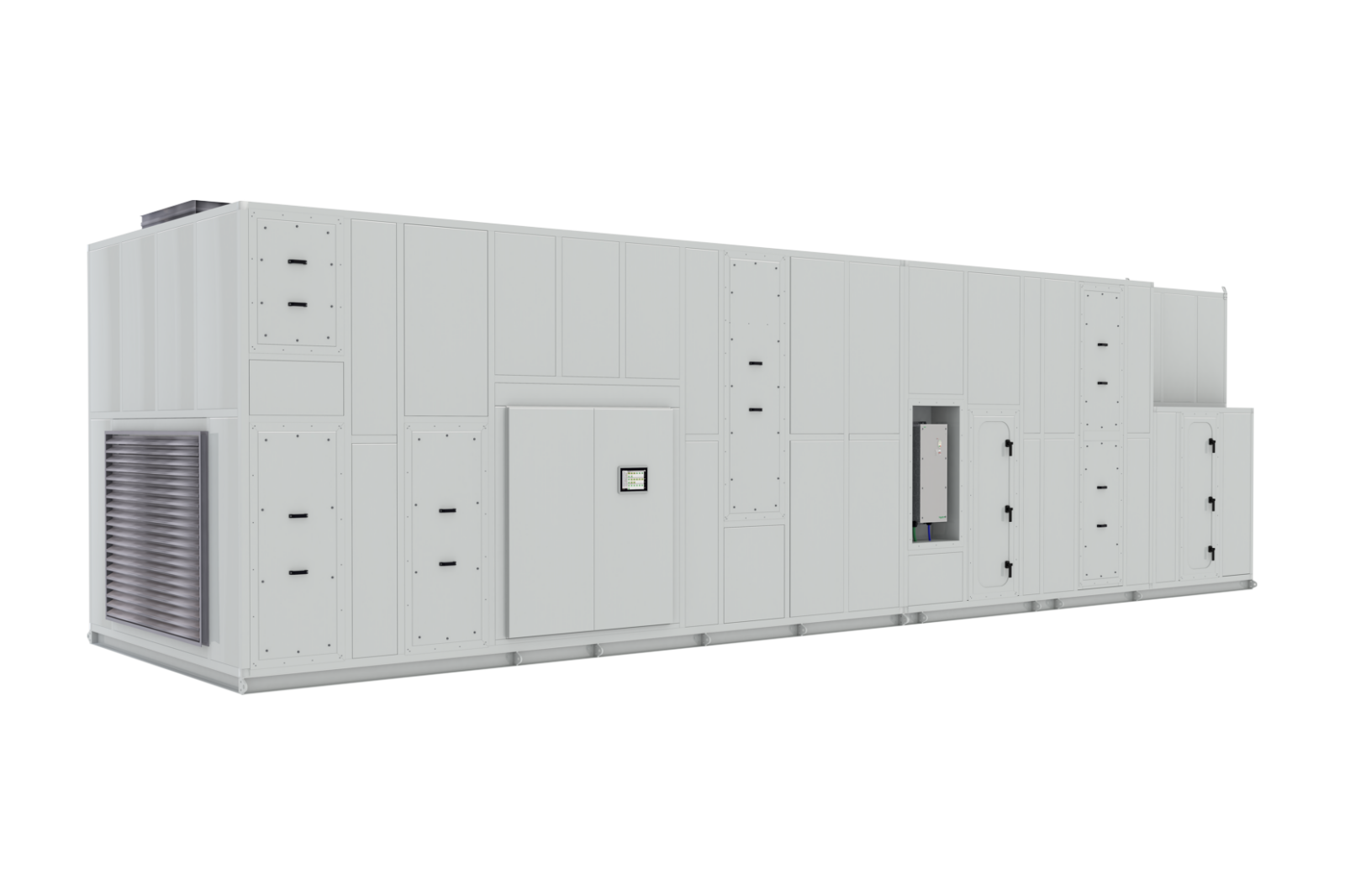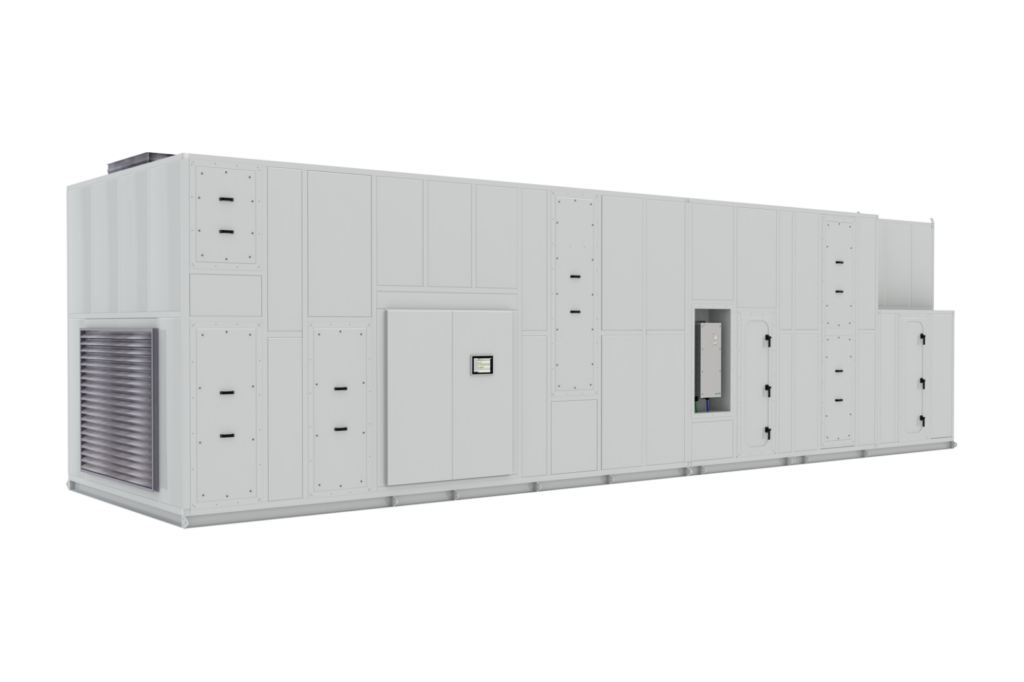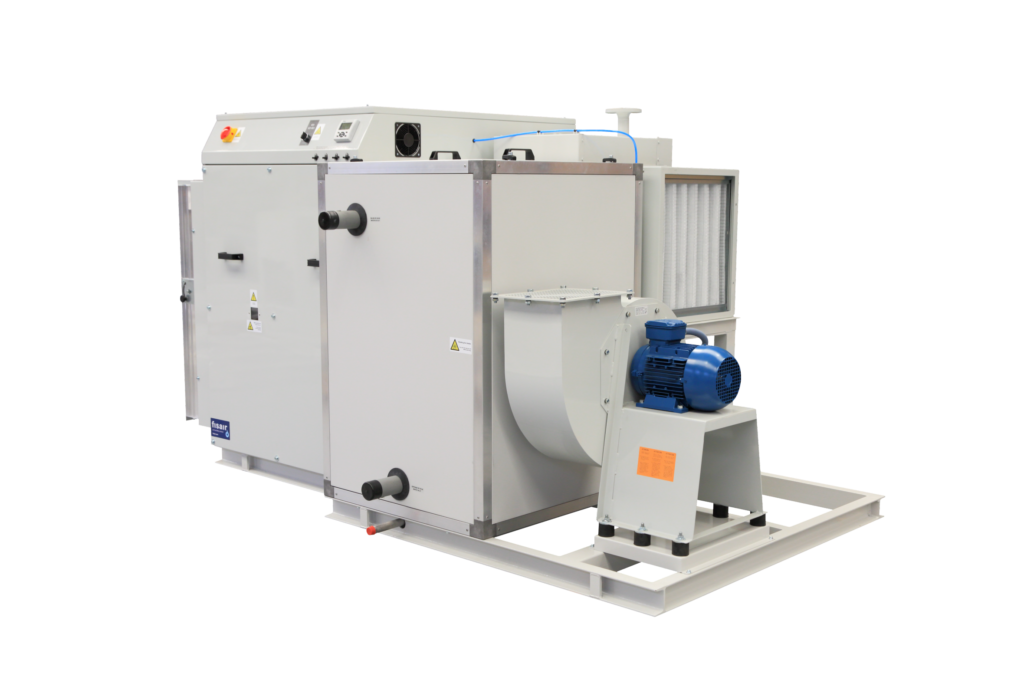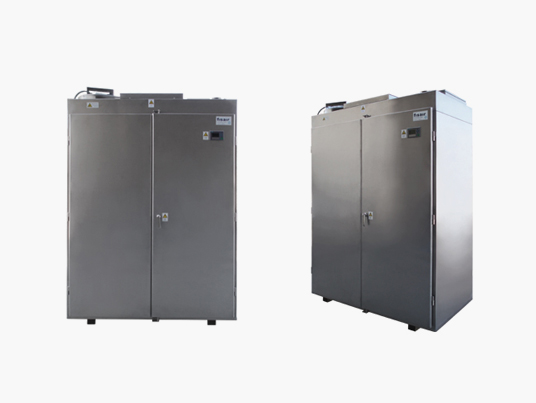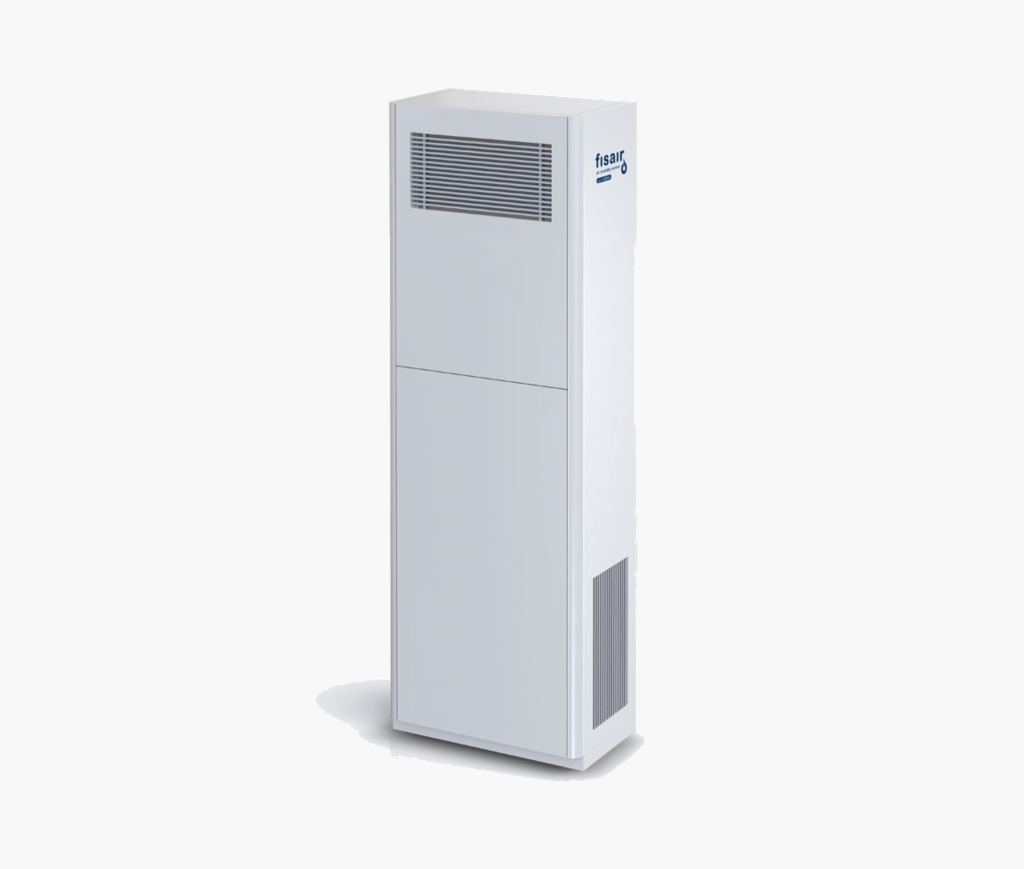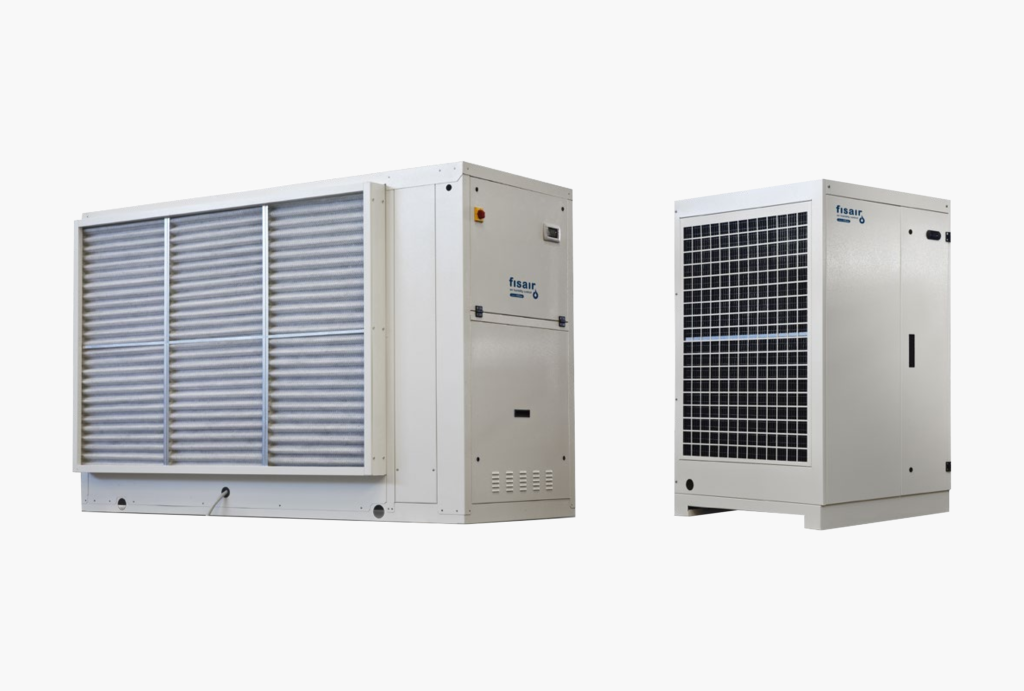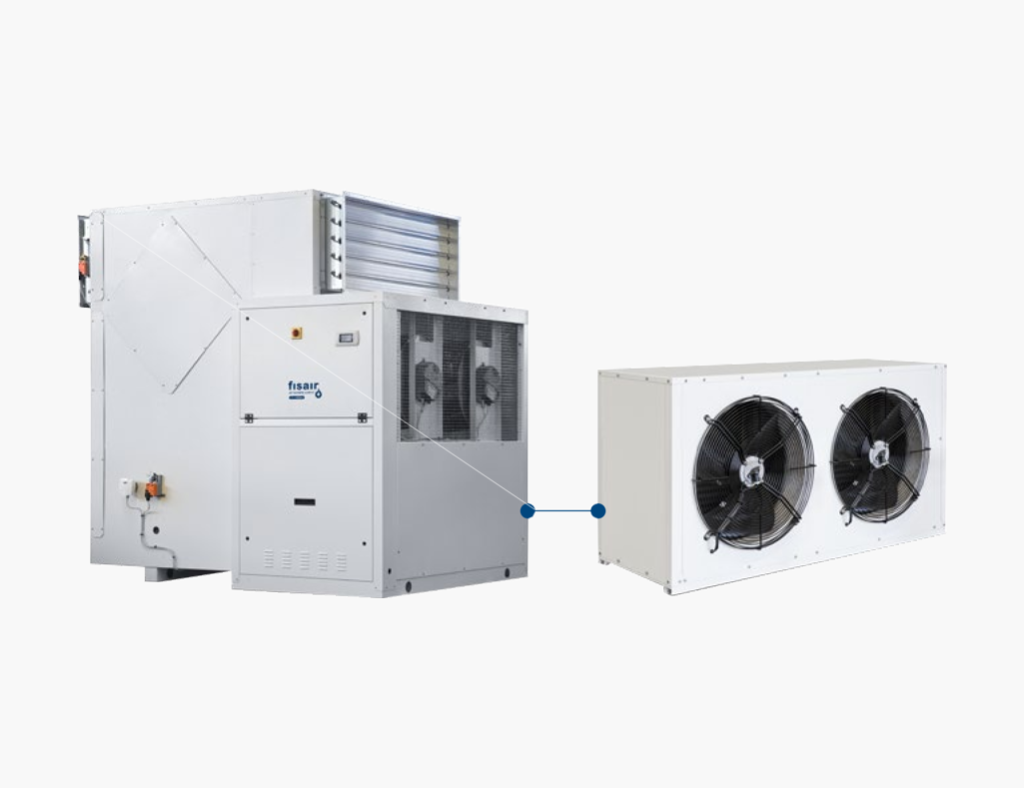-
 Flexible modular range.Adaptable to specific solutions. Highly reliable equipment with drying capacities from 51 to 152 kg/h and dry air flow rates from 7,500 to 24,000 m3/h.
Flexible modular range.Adaptable to specific solutions. Highly reliable equipment with drying capacities from 51 to 152 kg/h and dry air flow rates from 7,500 to 24,000 m3/h. -
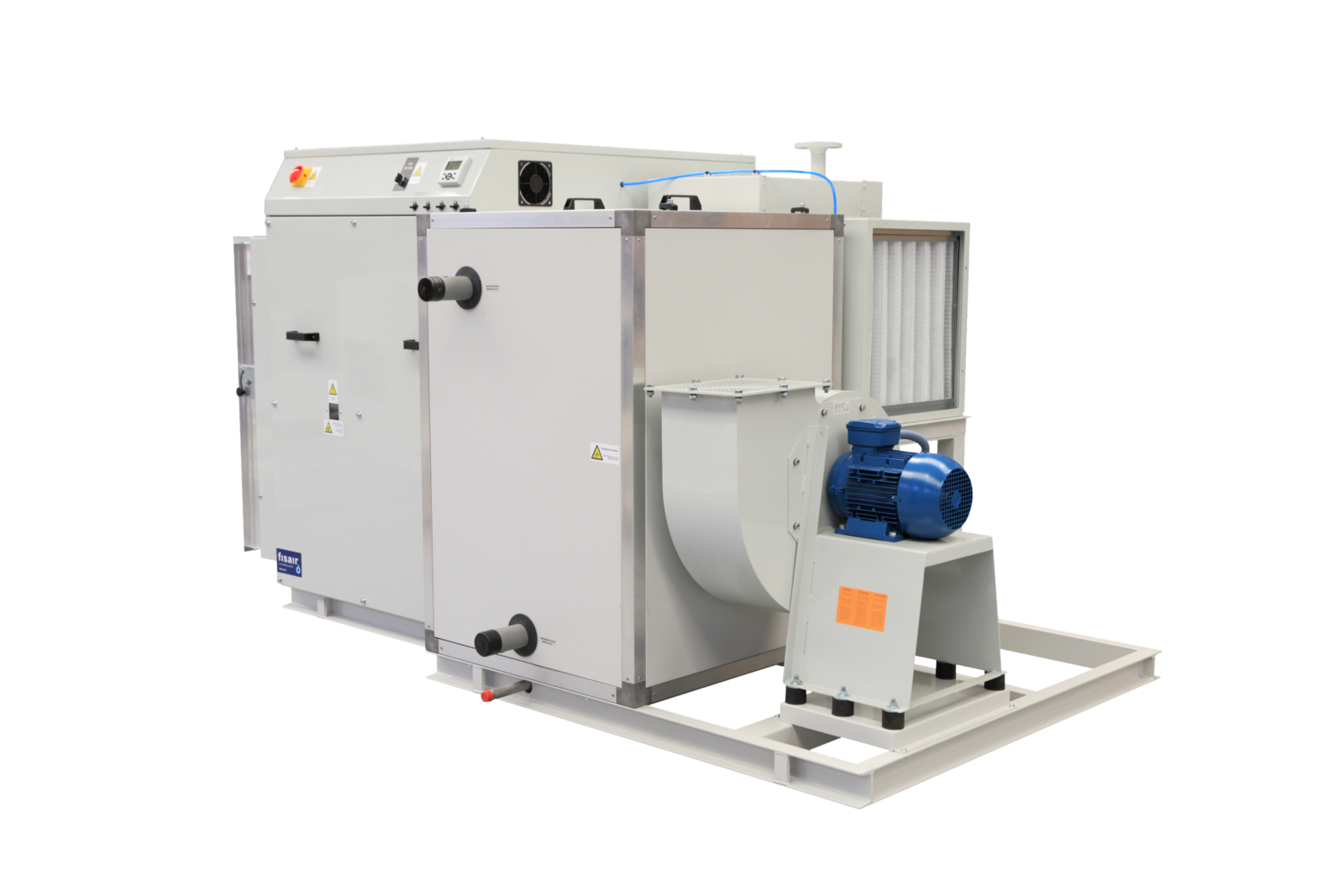 A wide range of Solutions. Highly reliable units with drying capacities from 4 to 42 kg/h and dry air flows from 450 to 6.000 m3/h.
A wide range of Solutions. Highly reliable units with drying capacities from 4 to 42 kg/h and dry air flows from 450 to 6.000 m3/h. -
 The compact solution. The B series made from stainless steel provides a range of highly compact, robust and portable dehumidifiers for use in the most demanding applications while meeting high reliability and low energy consumption needs.
The compact solution. The B series made from stainless steel provides a range of highly compact, robust and portable dehumidifiers for use in the most demanding applications while meeting high reliability and low energy consumption needs. -
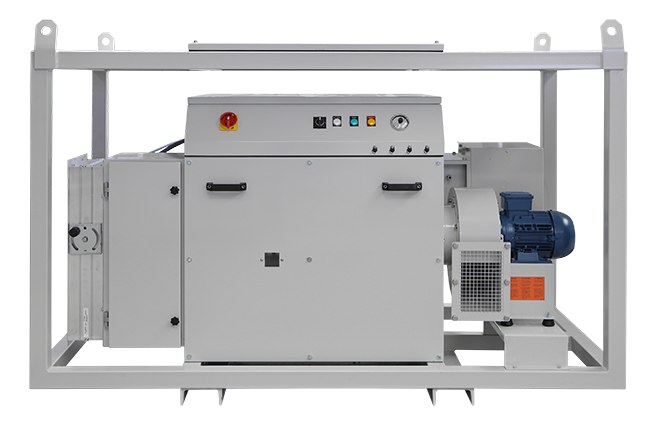 Mobile and heavy duty drying. Series aimed at temporary drying with a robust chassis and finish to protect against corrosion. Ideal for surface treatment and rental applications.
Mobile and heavy duty drying. Series aimed at temporary drying with a robust chassis and finish to protect against corrosion. Ideal for surface treatment and rental applications. -
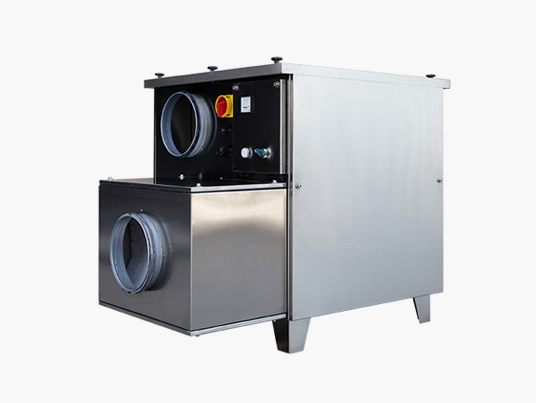 The compact solution. This range completes the B series with an additional fan to increase the specific drying capacity and the available wet air pressure.
The compact solution. This range completes the B series with an additional fan to increase the specific drying capacity and the available wet air pressure. -
 Ice-free energy lossless. Units designed to reduce humidity in refrigerated areas and proceses. Leader in its field in terms of its thermal insulation, robust design and energy efficiency.
Ice-free energy lossless. Units designed to reduce humidity in refrigerated areas and proceses. Leader in its field in terms of its thermal insulation, robust design and energy efficiency.
Controlling humidity is important for human health and for comfort, for this reason air humidity control technology is very important. It is vital for many processes and the use or storage of certain products. Dehumidifiers are used wherever one wants to control humidity, not just in very humid or damp areas.
By classifying your application according to the solution we want to provide, we have some examples:
- Corrosion prevention:
- Using a DH can save the security and armed forces millions of Eurosin the storage of materiel such as aircraft, tanks, and naval vessels.
- It helps to prolong the life of printed circuits in the computer hardware which might otherwise suffer micro-corrosion.
- It reduces the servicing costs and increases the rapid response availability of power turbines.
- It enables the batteries, including lithium batteries, to be produced on an industrial scale. Lithium corrodes at a very low ambient humidity.
- Condensation prevention:
- Dehumidifiers enhance visibility and conditions for sports, as well as prolonging the durability of sports facilities with ice rinks.
- Water treatment plants cut maintenance costs and prevent serious corrosion problems if the humidity in control and pumping rooms is controlled.
- Large metal parts in ships, pipes and off-shore structures withstand sea conditions if they are painted in a dry atmosphere.
- Dehumidifiers can boost production of plastic injectors that produce toys, bottles and automobile parts.
- Preventing micro-organisms from forming:
- The life of priceless works of arts can be extended and their appearance preserved by controlling the humidity of their surroundings.
- Plant and crop seeds can be conserved to be used when needed in the sowing season or to preserve the species.
- Some foods such as milk powder or cocoa can be stored for longer without spoiling.
- Brewers can store their raw materials and produce their beer without the quality being impaired when the air humidity is controlled at various stages of the process.
- Storage of hygroscopic materials:
- Sweets can be manufactured and conserved in their wrappers without deteriorating thanks to the dry atmosphere.
- Domestic and car windows and windscreens will not shatter thanks to a hygroscopic membrane that requires very dry air when it is being applied in layers.
- Semi-conductor production (with very hygroscopic polymers) and the manufacturing of chemicals and pharmaceuticals can be carried out to the highest quality standards in an atmosphere with controlled humidity in what are known as clean rooms.
- Sugar can be transported and stored without blockages thanks to dry air jets.
- Drying products at low temperatures
- The coatings used on sweets and tablets can be made on an industrial scale thanks to dry air.
- Tomatoes and milk can be converted to powder thanks to a highly efficient drying process.
- The proccesing of the serrano ham is aided by our dehumidifiers: The curing can take place in less time and it is not necessary to do it in zones of high heights (the mountain).
- Gelatin capsules are a relatively new way of delivering medication and can be mass produced thanks to these systems.




